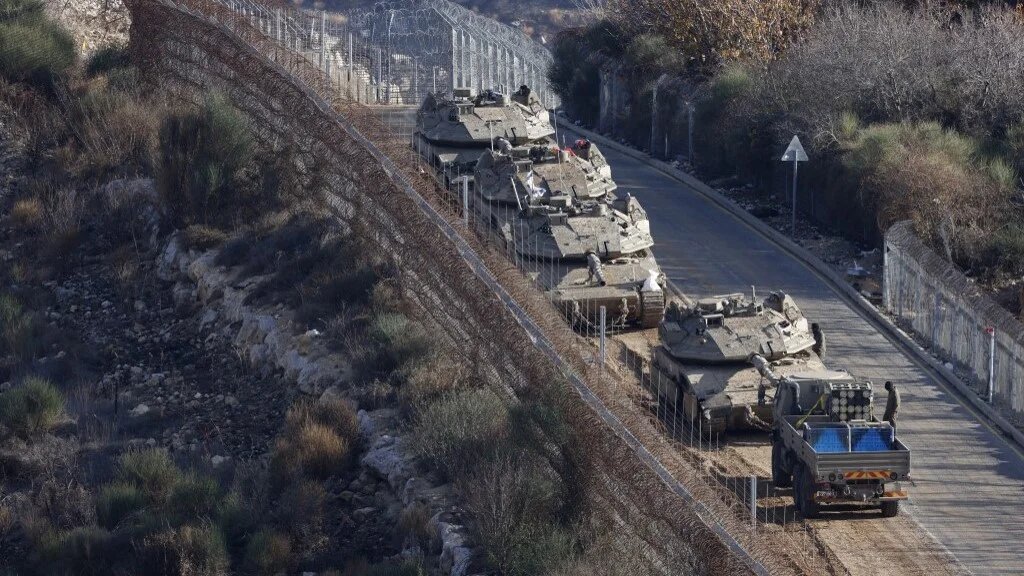AhlulBayt News Agency (ABNA): The UN warned on Monday that Israeli military activity along the Golan Heights buffer zone in Syria "would constitute a violation" of a 1974 pact on disengagement between Israel and Syria.
Israel occupied most of the Golan Heights during the 1967 Middle East war and later annexed the territory in a move never recognized by the international community.
On Sunday, the Israeli army imposed "closed military zones" in Syria’s occupied Golan Heights following the sudden fall of the Assad regime.
Told of the Israeli plans, UN peacekeepers "informed the Israeli counterparts that these actions would constitute a violation of the 1974 disengagement agreement, that there should be no military forces or activities in the area of separation," UN spokesman Stephane Dujarric told a news conference.
Stating that the UN Disengagement Observer Force (UNDOF) has seen "unidentified armed individuals that have been manning checkpoints in the area of operations," Dujarric said UNDOF can also confirm that the Israeli army personnel "entered the area of separation and have been moving within that area where they remain in at least three locations throughout the area of separation."
Dujarric reported that the Israeli army said it "would enter that area as 'a temporary defensive measure' to prevent it from being occupied by non-state armed groups. The Israelis also told our UNDOF colleagues that it reserved the right to take any action against any threat against the state of Israel," he said.
"The peacekeepers in UNDOF informed the Israeli counterparts that these actions would constitute a violation" of the 1974 agreement, he said, adding: "Israel and Syria must continue to uphold the terms of that 1974 agreement and preserve stability."
Iran calls on UNSC to prevent further occupation of Syria by Israel
Iran calls on the UN Security Council to immediately take measures to stop the occupation of Syria by the Israeli army, Iranian Foreign Ministry Spokesman Esmaeil Baghaei said.
"Baghaei condemned the military invasion of the Zionist regime of the Syrian territory at a moment when the people of Syria were dealing with the changes, caused by the regime change, called this act of aggression a gross violation of the UN Charter and called on the UN Security Council to immediately take measures to stop the aggression and bring the occupation regime to responsibility," the Iranian Foreign Ministry said in a statement.
History of the Occupation
The history of Israel's occupation of the Golan Heights began during the 1967 war when Israel captured the territory from Syria. Despite attempts by Syria to regain control during the 1973 Yom Kippur War, Israel maintained its hold on the region. The 1974 Disengagement Agreement allowed for some Israeli withdrawal but left the Golan under Israeli control. In 1981, Israel unilaterally annexed the Golan Heights, a move that remains internationally unrecognized except by the United States.
An agreement called the Disengagement Agreement, which was signed on May 31, 1974, stipulates Israel’s withdrawal from all of the areas of Mount Hermon it had occupied during the 1973 Arab-Israeli War as well as an area of about 25 square kilometers (9.6 square miles) that included Quneitra and other locations.
The agreement defines the current border between Israel and Syria along with the accompanying military arrangements, creating two separation lines – Israeli (blue) and Syrian (red) – with a buffer zone between them.
The Golan Heights is crucial for Israel's military strategy and water supply. Located approximately 60 kilometers from Damascus, it provides a significant military advantage and supplies a substantial portion of Israel's water through the Jordan River and other sources. While considered Syrian territory by most of the international community, its location bordering Lebanon and Jordan enhances its strategic importance.
The area is also home to over 30 Jewish settlements with around 20,000 settlers, which are deemed illegal under international law. Approximately 25,000 Syrian Druze Arabs inhabit the region and have largely resisted Israeli influence while seeking reunification with relatives across the border. The Druze community has displayed Syrian flags and cultural symbols to preserve their heritage despite political pressures.
......................
End/ 257

